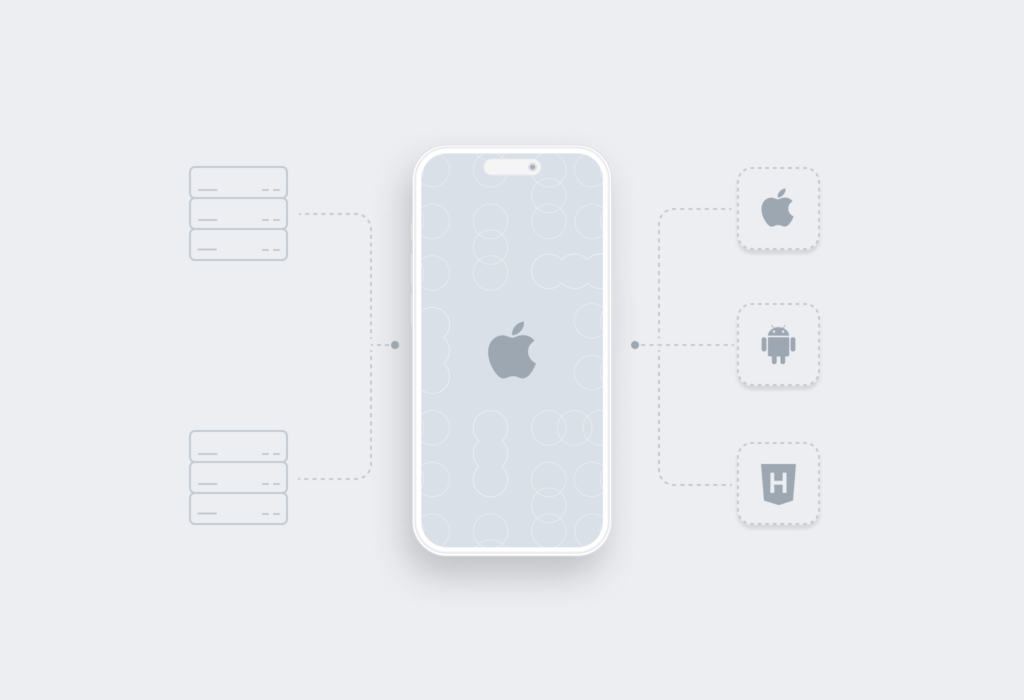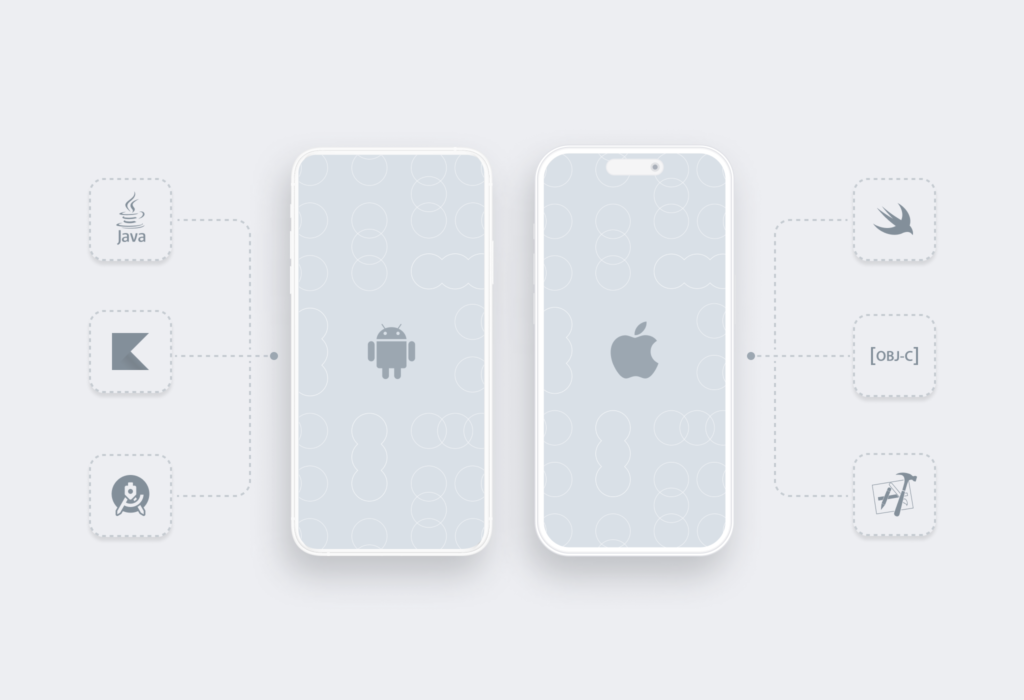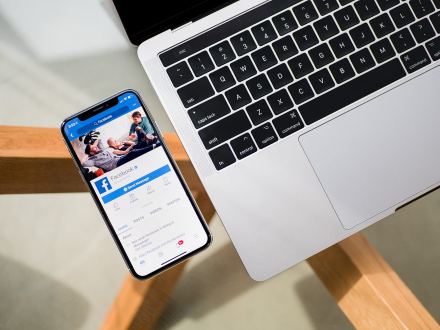Your message has been sent.
We’ll process your request and contact you back as soon as possible.
The form has been successfully submitted.
Please find further information in your mailbox.


When it comes to mobile development, things do not always go as planned. According to the Gartner report, only 00.01% of mobile apps gained commercial success in 2018, so just one out of 10 000 projects turns out to be rewarding. Moreover, 45% of projects face budget overruns and 56% does meet the expectation of stakeholders in terms of value. In addition, 60% of apps launched on Google Play show an 80% downloads decline right after the first week. Such poor figures are clearly a cause for concern, as well as a message that mobile development should be considered thoroughly to avoid failure.
Undoubtedly, not only statistics but common sense proves that apps with tech stack issues are doomed to fail. Thus, thinking about a properly chosen technology stack for mobile app development in advance gives project teams some crucial benefits. By doing so, developer companies can predict in advance the performance of a particular application, its scalability, and its costs. Moreover, by picking the best programming languages for app development, teams have an opportunity to predict maintenance and support costs.
Picking the right technology stack for mobile development allows teams to:
Choosing the wrong tech stack may lead to some significant issues, bottlenecks, and even increased costs of development. The drawbacks of getting wrong with the right techs are the following:

Whatever type of mobile app is planned to be created two main components should be employed. Every app has the client side and the back-end. The first is also known as the front-end and represents everything that users will see on their screens or interact with.
The back-end is the brain of a mobile app. The back-end handles data processing, storage, security, and many other things. The back-end is a part of the app that you don’t see because it runs on the server, but it allows your mobile app to function.
While choosing the right technology stack for mobile app development can be challenging, there are a few criteria that help make the process easier and faster:
This refers to building an application for separate platforms like Android (Java, Kotlin) and iOS (Swift, Objective-C) that can access different smartphone features (camera, address book, NFC module). While the whole process of creating digital solutions looks similar at a first glance, you will use a different set of tools to build the final product.
Native Android/iOS technology works directly with frameworks from Google and Apple, which gives the following advantages:
Cross-platform mobile development is a technology solution that allows developers to allocate common and reused blocks for multiple platforms (Android / iOS / Web / Desktop) and implement them once in the Kotlin language. In this case, both native and cross-platform technologies can be used to implement the UI.:
The cross-platform approach allows one code base to be used across various mobile operating systems. Ionic/Cordova/Capacitor are the main components of a cross-platform technology stack. However, it is sometimes necessary to write code separately for Android and iOS due to differences in UI and implementation. Here are some important things that you need to consider before building a cross-platform app:

Xamarin and React Native are frameworks that allow building mobile applications for Android and iOS with a single code base, based on wrappers over native widgets:
Flutter is a hybrid technology. Codebases from web applications are not reused to create mobile apps. Because of its own drawing engine, Flutter is more effective than Xamarin or React native:
The choice of the technical stack can either make or break a project. Customers are not always tech-savvy enough to choose the right programming languages, frameworks, etc. Consulting with mobile software development experts before launching a project fills the knowledge gap and eliminates the risk of failure.
Innowise possesses a vast pool of top-tier mobile developers who leverage the most sophisticated technologies, helping customers receive turnkey solutions that make businesses thrive. We are capable of employing technologies to provide our clients with consistently high-quality products. Our company uses the best of each technology stack and knows where to apply a particular language/framework to make the most out of it. We take care of all the technical details while you concentrate on the strategic aspects of your business.

Rate this article:
4.8/5 (45 reviews)












Your message has been sent.
We’ll process your request and contact you back as soon as possible.

By signing up you agree to our Privacy Policy, including the use of cookies and transfer of your personal information.